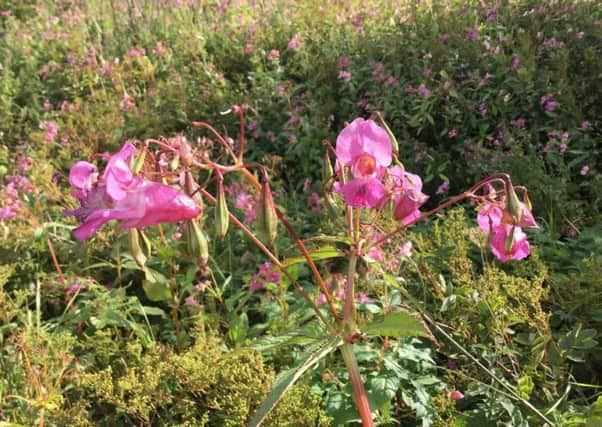The delicate balance of cultivation and nature


When out walking or riding, we experience the weather in its various moods, observe seasonal plant developments, and occasionally spot secretive wild animals.
If all is well with the local flora and fauna, which is seen as humankind’s natural early warning system, then we can rest easy in our beds.
Advertisement
Hide AdAdvertisement
Hide AdOur cultivated plants originate from the wild, where relatives remain to this day.
The stunning herbaceous perennial Achillea Gold Plate, and several other modern-day cultivars, can be traced back to the common yarrow (Achillea millefolium), found on waste grassland and as a weed in lawns.
Cultivated forms of knapweed (centaurea) are planted in this garden, attracting bee species in flower, followed by goldfinches when in seed.
Two popular members of the geum family, Mrs Bradshaw (double scarlet) and Lady Stratheden (double yellow), are splendid front-of-border perennials. Geum rivale is the countryside version, found in damp areas near a stream.
Advertisement
Hide AdAdvertisement
Hide AdWild cranesbill is the forerunner of stunning herbaceous geraniums.
There’s always been a two-way plant exchange between countryside and garden.
The late-summer breeze picks up unwanted seeds of thistle, willow herb, et al, and deposits them on our patch. We’re alert to unwanted seedlings. Conversely, our cultivated plants colonise areas of countryside via several agents, birds especially.
Structural damage is inevitable when buddleja gains a foothold in the stone wall of a building. Even greater distress can be caused by three ornamental plants introduced in the 19th century.
Advertisement
Hide AdAdvertisement
Hide AdGiant hogweed (Heracleum mantegazzianum), Japanese knotweed (Fallopia japonica) and Himalayan balsam (Impatiens glandulifera) made bold statements in the borders of large gardens, but escaped to the countryside, where they have established colonies.
Hogweed has invaded our river systems and damp environments. The underground rhizomatous roots of knotweed threaten the foundations of any structure in their path, and tall impatiens has seed capsules that explode, spreading the contents.
Recognition of these plants and monitoring of their movements is important.
A huge colony of Himalayan balsam has taken up residence on both banks of a local burn and currently covers half a mile. The invasion must surely have had an adverse effect on existing wildflower species.
We don’t want such plants invading our gardens or allotments.